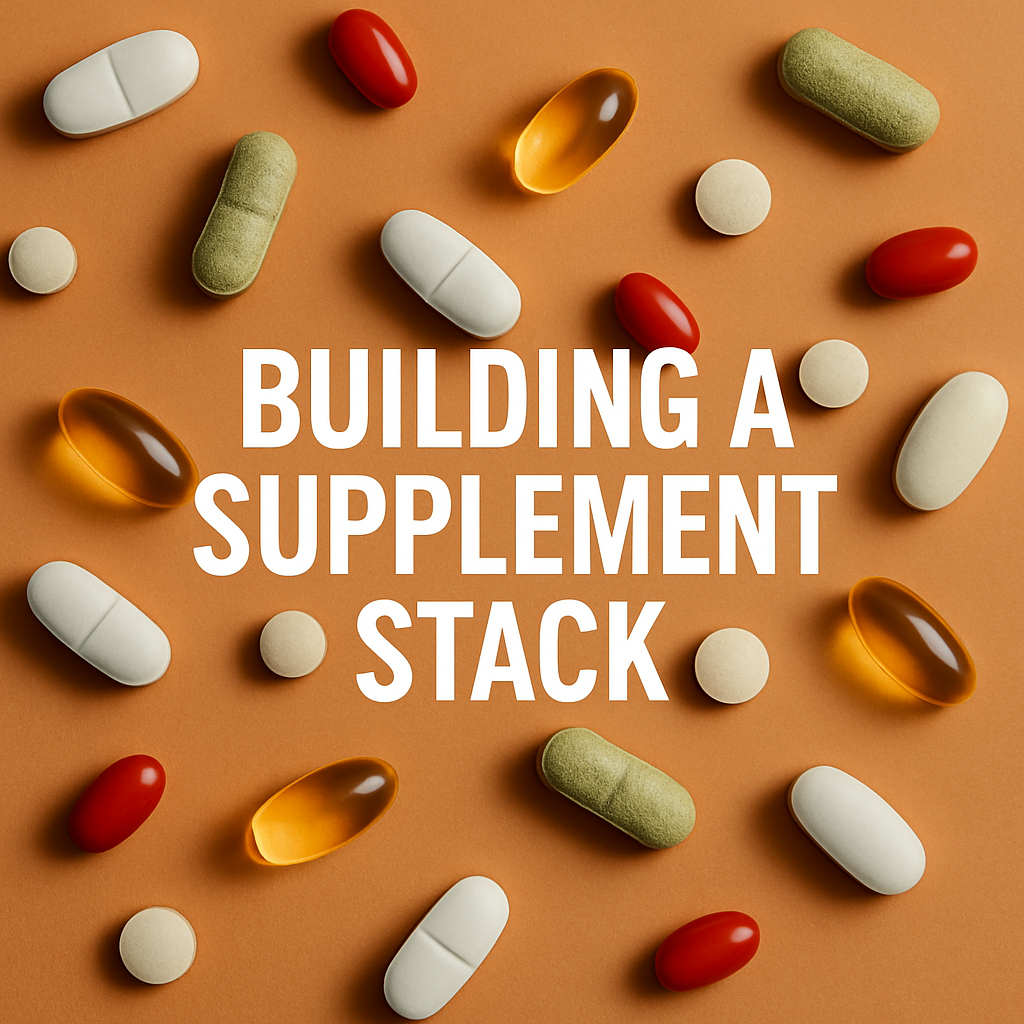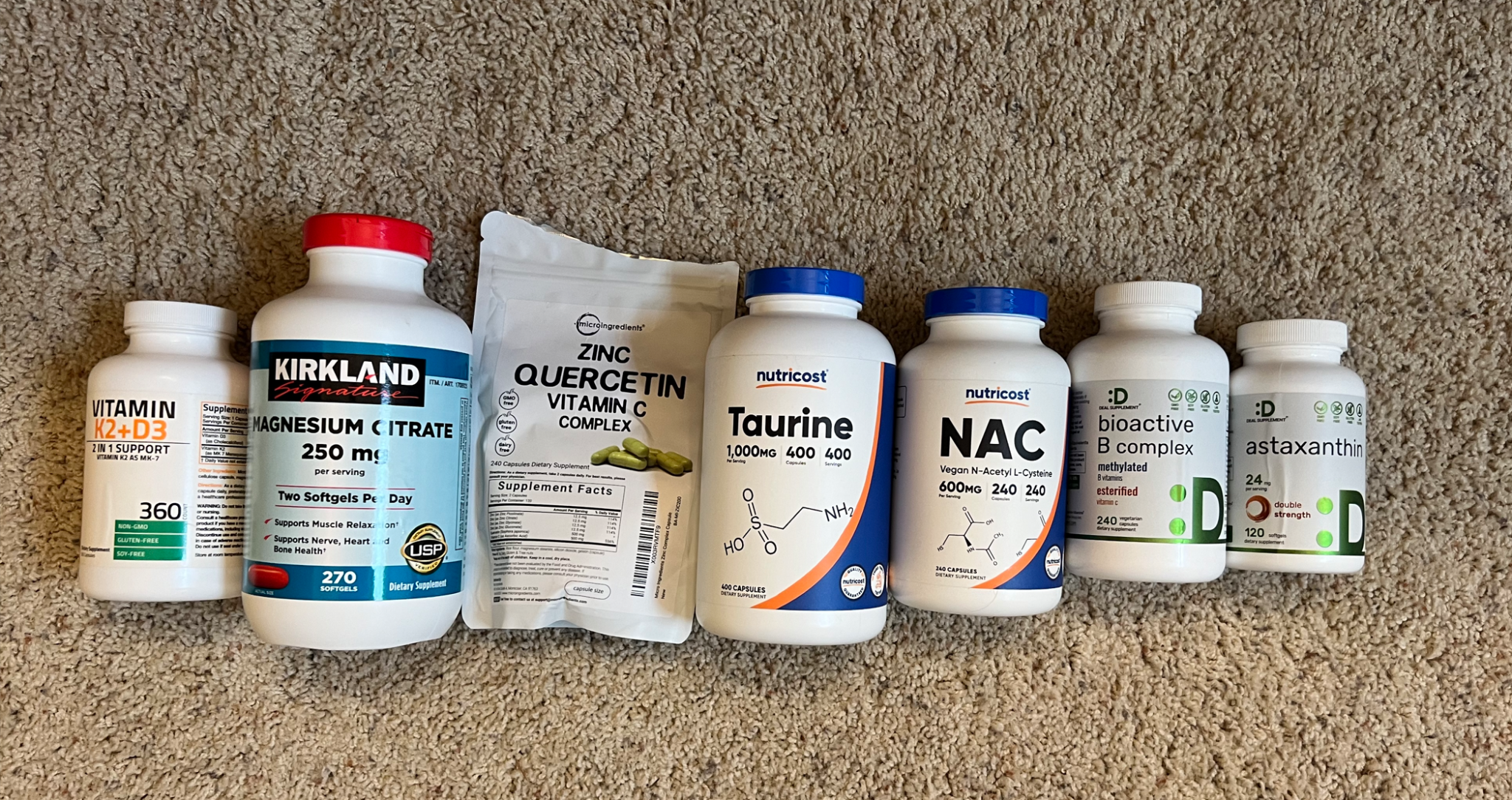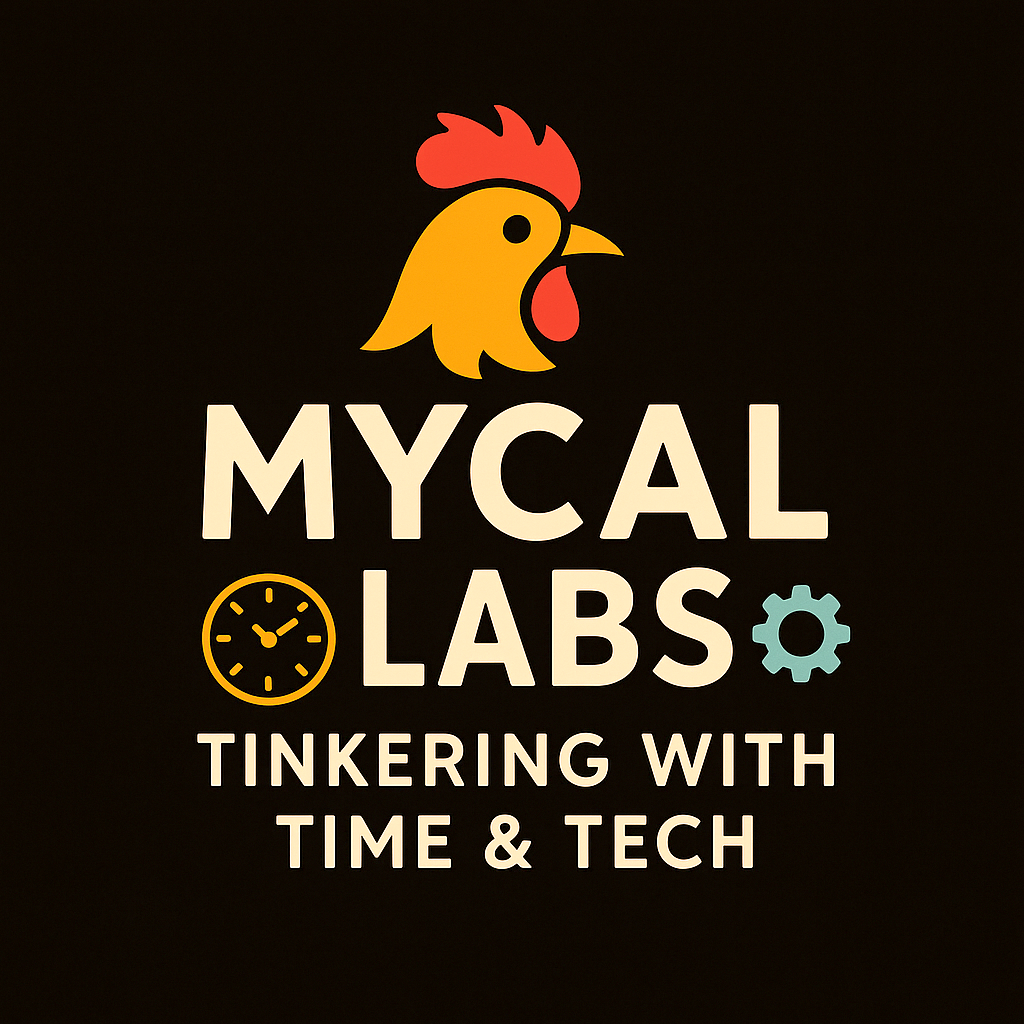Five Years in the Supplement Trenches: What Stuck, What Didn’t, and Why Tech Bros Still Don’t Get Magnesium
Five years, two people, dozens of supplements tested. Most failed. A few became architecture. From Vitamin D and Magnesium to NAC and Taurine, here’s the stack that survived—and why cheap shortcuts like magnesium oxide don’t.

Tinkering with Time, Tech, and Culture #13

In tech we love stacks. But biology isn’t a Dockerfile. You can’t just pile on random layers and expect it to run better.
This isn’t medical advice — just our lived experience: two people, five years of trial and error, and one supplement stack that survived the hype cycle.
Act I: The Foundation
If you only remember one thing from this post, it’s this:
The Core ThreeVitamin D3 + K2 MK-7 — Corrects the most common deficiency. K2 keeps calcium where it belongs.Magnesium (citrate/glycinate) — Cofactor for hundreds of enzymes, balances D, supports sleep and recovery.Zinc (picolinate/glycinate/citrate) — Crucial for immune resilience.
Everything else is optional. These three are the base layer. Without them, the rest doesn’t matter.
We started here in 2019: Vitamin D3 (2000 IU) with K2, and 100 mg of magnesium citrate. Over time that became 5000 IU of D3 with 90 mcg of K2 MK-7, and magnesium split into citrate by day and glycinate by night.
Already, we were ahead of most “tech stacks,” where people swallow magnesium oxide thinking it works. It doesn’t.
Act II: The Pandemic Push
Late 2019, the virus was spreading in China. By January 2020, we had added:
Zinc (10 mg picolinate) → for immune resilience.
NAC (600 mg) → precursor to glutathione, the body’s master antioxidant.
This pair became our immune foundation. NAC especially became a quiet workhorse — so effective the FDA briefly tried to pull it off shelves. We stuck with it anyway.
(Breadcrumb: NAC has long been used in clinical settings to restore glutathione and support respiratory health. It’s the same compound doctors give in hospitals to keep your liver supplied with glutathione, and prevent liver damage, if you overdose on Tylenol.)
Fish Oil came back into my stack (not hers). Stable through early 2020, except NAC supply dried up for over a year.
Act III: The Experimental Years (2021–2023)
We tinkered.
- Quercetin + Bromelain (early tests).
- Choline + Inositol (500 mg).
- NAD+ boosters (didn’t stick).
- L-Citrulline Malate (pre-workout, 2023).
- Nattokinase (2023) for blood pressure (worked for me, then discontinued in 2025 when my BP normalized; wife started her own trial later).
Some of these were fun. Some were fads. None stuck like the core.
Act IV: Refinement (2024–2025)
By mid-2024, the stack tightened again:
- Switched zinc → from 10 mg single form → 25 mg mixed zinc with 500 mg quercetin + 500 mg vitamin C.
- Added Taurine (1000 mg) → backed by studies linking taurine to longevity and reduced all-cause mortality.
(Breadcrumb: Recent large-scale studies suggest taurine deficiency accelerates aging in mammals, and supplementation may improve healthspan and reduce all-cause mortality.) - Added Methylated B complex (½ dose) → to cover methylation, energy, nerve health.
- Experimented with Astaxanthin (July 2025) → the “red algae” antioxidant. I took it through summer, no sunscreen at the lake or Burning Man — and no sunburn.
(Breadcrumb: Astaxanthin is clinically studied for skin photoprotection, reducing UV-induced damage and sunburn risk.)
Today’s Stack (Sept 2025)
Shared (both of us):
- Vitamin D3 (5000 IU) + K2 MK-7 (90 mcg)
- Magnesium (citrate + glycinate, 125–250 mg total)
- Zinc (50 mg mixed forms) + Quercetin (500 mg) + Vitamin C (500 mg)
- NAC (600 mg daily, sometimes 1200 mg if socializing)
- Taurine (1000 mg)
- Methylated B Complex (½ dose daily)
Me (Mycal only):
- Astaxanthin (daily, since July 2025)
Her (wife only):
- Nattokinase (since Aug 2025, trial for blood pressure; may take 6+ months to show results)
The NAC Rule
NAC deserves its own mention:
- Daily baseline: 600 mg.
- Social mode: 1200 mg, at least 2 hours before socializing.
- Why: It primes the liver’s glutathione system. Next day feels noticeably smoother.
- Caution: Taken after drinking, it may actually blunt recovery.
NAC is a shield, not a cure.
Lessons Learned
- Start with the Core: If you only take one thing, it’s D+K. If two, add magnesium. If three, add zinc. Everything else is optional.
- Form Matters: Citrate vs. glycinate, picolinate vs. oxide, MK-7 vs. generic K. Absorption is the difference between placebo and effect.
- Personalization Beats Hype: My wife needed more magnesium. I responded to astaxanthin. Nattokinase helped my BP — but it took 6 months. Now we’re checking it on hers.
- Situational Use: NAC before parties. Nattokinase on empty stomach. Magnesium form depending on time of day (citrate morning/day, glycinate night). Context is everything.
- Supplements Aren’t Code: Engineers treat stacks like Dockerfiles — just piling on whatever new line item some Reddit thread recommends.
They forget that biology isn’t a single container; it’s a whole network of services and dependencies.
Without intent, you’re just debugging your own body.
Why I’m Writing This
I’ve had to explain this stack — or at least the basics of it — at least a thousand times.
A techbro (actually a techgirl) once told me proudly she was going to “start taking magnesium.” Then she showed me the bottle: cheap magnesium oxide. The same mistake, over and over.
I’ve even resorted to sending people direct Amazon links, just so they wouldn’t come back with oxide, or foul-smelling multivitamins loaded with fillers and strange chemicals.
This post is the explanation I wish I could just hand out once, instead of repeating endlessly.
Outro
Five years, dozens of trials, two people. Some things stuck, most didn’t.
Today, our stack is boring, stable, and effective. Not sexy. Not exotic. Just grounded.
In code, intent matters. In biology, balance matters. And in both, cheap hacks fail.
Magnesium oxide? That’s not biohacking. That’s just bad engineering.
Appendix: What It Looks Like
Here’s the stack as it actually sits on our shelf today (Sept 2025).

Not endorsements, not prescriptions — just the bottles we actually use. If yours look similar (right form, right dose), you’re on the right track.
How We Really Dose
Supplement labels often push higher-than-needed doses to look strong on paper.
In practice, we take less, rarely sometimes more — tailoring for effectiveness, safety, and what actually feels right.
- ⭐ Vitamin D3 + K2 MK-7
- Label: 5000 IU D3 + 90 mcg K2
- We take: full dose daily
- ⭐ Magnesium (citrate + glycinate)
- Label: ~250 mg total
- I take: ½ dose (~125 mg)
- My wife takes: full dose (~250 mg)
- ⭐ Zinc + Quercetin + Vitamin C Complex
- Label (2 caps): 50 mg zinc, 500 mg quercetin, 500 mg C
- We take: ½ dose (1 cap) → 25 mg zinc, 250 mg quercetin, 250 mg C
- NAC (N-Acetyl Cysteine)
- Label: 600 mg per cap
- We take: 1 cap (600 mg) daily
- Sometimes: 2 caps (1200 mg) before social events
- Taurine
- Label: 1000 mg per cap
- We take: 1 cap daily
- Methylated B Complex
- Label: 50 mg B1, 40 mg B2, 100 mg B3, 25 mg B6, 2000 mcg biotin, 680 mcg folate, 1000 mcg B12, plus C, inositol, choline, B5
- We take: ½ dose → still far above RDA, keeps it balanced
- Astaxanthin (Mycal only)
- Label: 24 mg per softgel (double strength)
- I take: ½ dose (12 mg) daily since July 2025
- Nattokinase (wife only)
- Label: 4000 FU per serving
- She takes: full serving daily before bed on an empty stomach
- Note: takes 6+ months to show results
